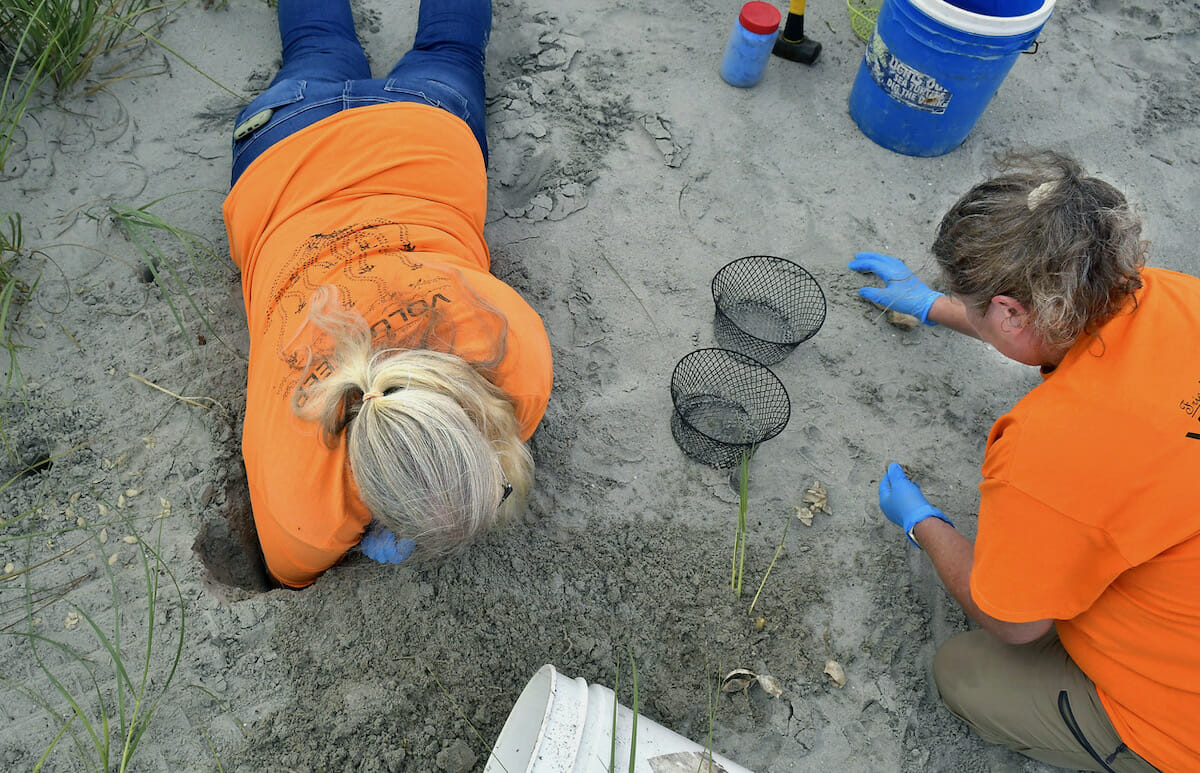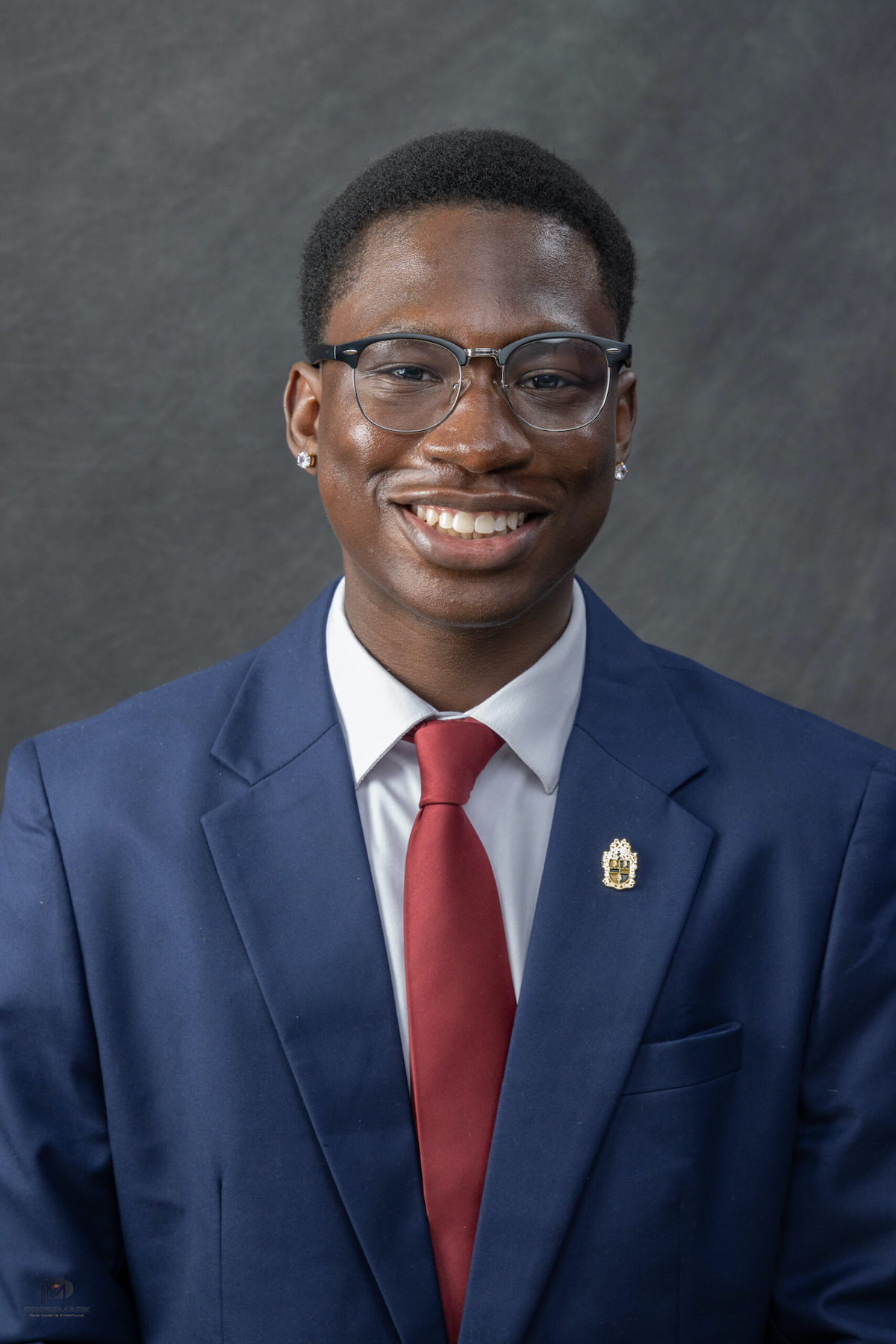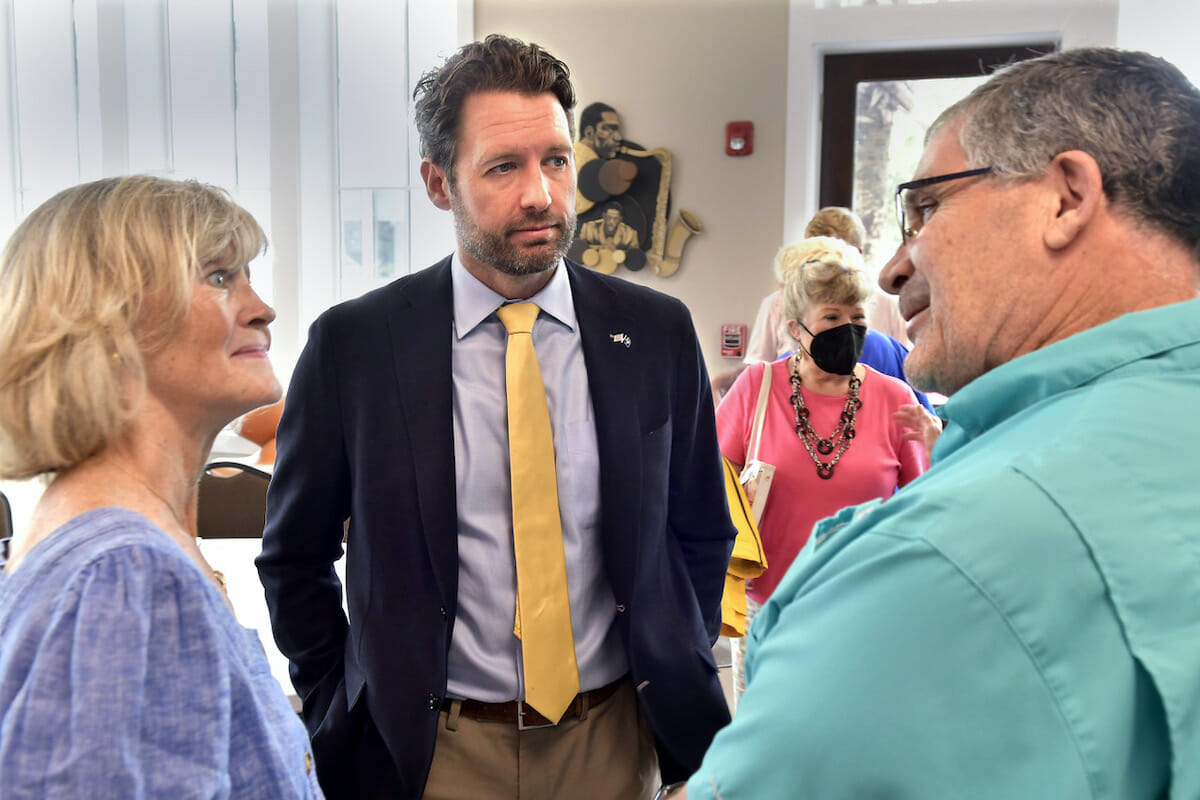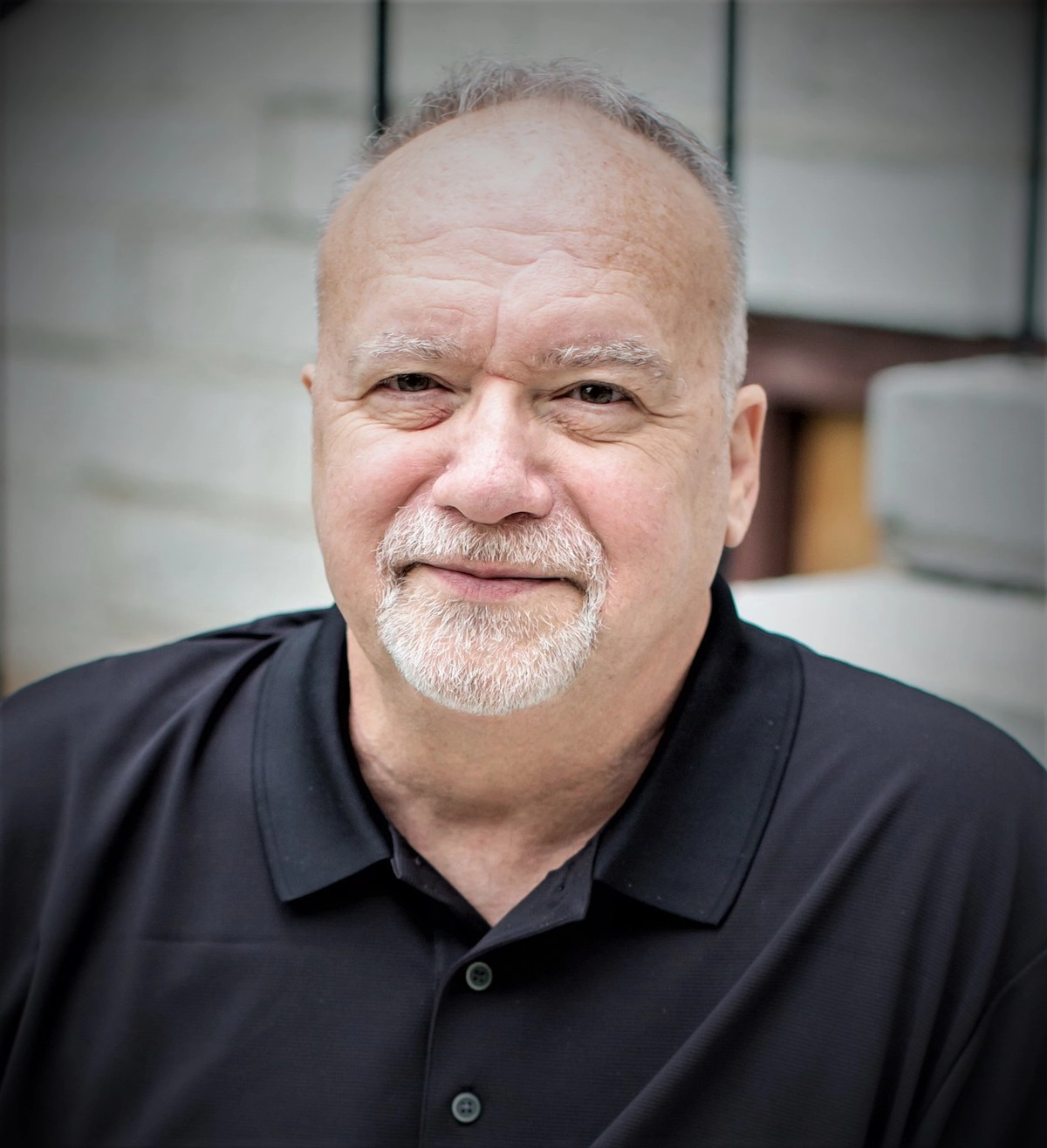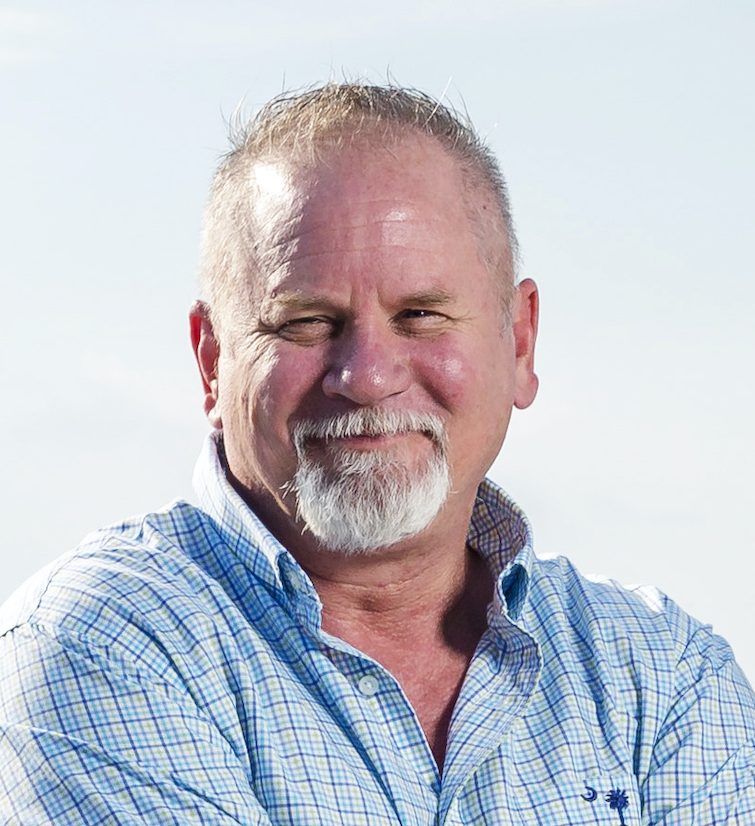Volunteers keep track of, help ensure success of sea turtle nests on Hunting Island
By Mike McCombs
HUNTING ISLAND – About five years ago, my girlfriend and I took an early evening trip to Hunting Island to get in a walk on the beach on a day that was overcast and cool for late summer.
While there, we happened on a small crowd and several Friends of Hunting Island volunteers gathered in two columns near the surf. We watched as the volunteers released a newly hatched sea turtle on the beach and cheered and encouraged it as it made its way to the ocean.
Fast forward to Monday, when I got a chance to relive that same scenario from five years ago.
Volunteers with the Friends of Hunting Island’s Sea Turtle Conservation Project were conducting a public inventory of nest No. 100, on the beach just north of the Hunting Island lighthouse. It was the perfect opportunity to see just how these volunteers contribute to the success of Loggerhead sea turtle nesting here in Beaufort County.
The volunteers on this day were Beth Glass, JoAnn Davis and Buddy Lawrence, the S.C. Department of Natural Resources (SCDNR) permit holder.
The people who give their time and effort to this cause are important on both ends of the sea turtle nesting process. The female sea turtles find a suitable place and then lay their eggs in the sand sometime during the night. The process takes about an hour, and the eggs are generally buried about 22 inches deep.

Volunteers patrol the beach in the mornings to identify nests. Once a nest is identified, the volunteers determine if it is located in a viable spot. Often, nests will have to be moved, particularly if they are in a location that might be covered by sitting water.
Relocated or in its original spot, a nest is then marked and protected. Lawrence said the chicken wire-like cages that are used to protect the nests are specifically to deter raccoons, the most common predator to which sea turtle eggs are lost.
Then they wait.
According to Lawrence, nest No. 100 was in the ground for 55 days before hatching August 19. He said volunteers usually give the nest a few days after hatching before “taking inventory.”
Taking inventory involves uncovering the hatched nests to determine the number of eggs that hatched, the number of eggs that didn’t hatch, as well as uncovering any hatchlings – live or dead – that may have failed to escape the nest.
Data is compiled, and the genetics are tracked for each nest.
With metal baskets for sifting sand, a couple plastic buckets and latex gloves, Davis and Glass got down and dirty on nest No. 100. Glass gently dug the nest out, single handful of sand by single handful of sand, while Davis searched the sand Glass excavated.
By the time Glass reached the bottom of nest, she was lying face down on the beach with her arm almost completely swallowed by the sand, while Davis separated the empty hatched eggs from the unhatched eggs that had been removed.

Meanwhile, Lawrence answered questions for the crowd of about two dozen spectators. He explained how the depth of the next can determine the sex of the hatchlings. The warmer eggs, he explained, result in females. The cooler eggs, those buried deeper, tend to be males. The tipping point, he said, is 84.4 degrees. At that temperature, the chances are split 50-50 between male and female.
“On average, how many eggs are in a nest?” a spectator asked.
“The average number of eggs in a nest is about 110,” Lawrence said.
“How many of the eggs generally hatch and make it to the water,” another person asked.
“On average, about 70 percent hatch successfully,” Lawrence answered.
And then suddenly, no one was asking Lawrence any more questions. In fact, most of the two dozen people standing in the sand couldn’t testify in court that Lawrence was even on the beach at that moment.
That’s because Glass was now standing, her arm no longer buried in the beach. And in her blue latex glove-laden hand she was holding the lone live hatchling that had remained in nest No. 100.
Maybe it couldn’t get out of the sand. Maybe it simply hatched late. But it was the only one of the 42 turtles that hatched in nest No. 100 that didn’t make it out. Thirty-six of the 78 eggs in the nest simply never hatched.
Kids made their way to the white five-gallon bucket for a closer look at the palm-sized turtle resting on moist sand. Adults took snapshots.
A short while later, those two columns of people we saw five years ago were recreated just a little ways down the beach as this hatchling, too, was released to make it’s way into the surf.
Watching the process complete itself again and imagining all of the turtles – there are a record 175 nests on Hunting Island this season – that have made or will make their way into the ocean, fate unknown, is an awesome thing. I was admittedly affected.
Like the volunteers and these nests, the experience can make you take inventory of your own life and maybe look at things a bit differently … and maybe want to be involved.
According to FOHI, loggerhead sea turtles are threatened in the United States and endangered internationally. These volunteers give their time and effort to aid them in their delicate and precise nesting process.
But still, they face an uphill battle, threatened by commercial fishing, boaters and most importantly, loss of habitat. Pollution, climate change and plastic waste in the ocean are threats, as well.
But there are opportunities right here to help. If you want to volunteer, visit friendsofhuntingisland.org.
Mike McCombs is the Editor of The Island News and can be reached at TheIslandNews.com.


